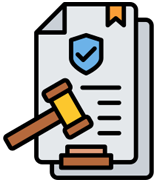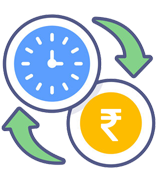Asset tokenization is the process by which an issuer creates digital tokens on a blockchain or other form of distributed ledger to represent digital or physical assets. Blockchain technology guarantees that once you buy tokens representing an asset, no single authority can erase or change your ownership, making it entirely immutable.
Asset tokenization is the process by which an issuer creates digital tokens on a blockchain or other form of distributed ledger to represent digital or physical assets. Blockchain technology guarantees that once you buy tokens representing an asset, no single authority can erase or change your ownership, making it entirely immutable
Bitcoin revolutionized how investments and assets can be issued, managed, and traded. Blockchain, the technology behind the world's first cryptocurrency, is a type of distributed ledger technology (DLT), and it opened the way for new means of investment.
DLT enables assets to be easily broken down into smaller units. This makes ownership more accessible, encourages the democratization of investment in historically illiquid assets, and brings about fairer markets. Whether paintings, digital media platforms, real estate, company shares, or collectibles, everything can be tokenized on a distributed ledger.


Asset tokenization offers many benefits, particularly in terms of liquidity, accessibility, transparency, and composability. Additionally, tokenization enhances transparency by enabling open tracking on blockchain networks of ownership and returns, mitigating fraud risks and improving trust.
Let’s explore the benefits of asset tokenization from two different perspectives.
Liquidity is a critical aspect of financial markets, but it's often hindered by siloed ledgers and limited accessibility to high-value assets. Asset tokenization presents a solution by digitizing assets and enabling fractional ownership, thereby increasing liquidity and accessibility. Through tokenization, assets become divisible into millions or billions of tokens, facilitating trading on accessible exchanges without intermediaries.
Assets that can't be liquidated often have an unestablished market price. In such cases, asset owners typically give buyers incentives like illiquidity discounts, which reduce the asset's price. Tokenization of assets can increase an asset's liquidity, by enabling fractional ownership, which eliminates illiquidity discounts.
Traditional transfer of ownership of an asset today requires intermediaries to handle the paperwork and create trust between seller and a buyer. Because of this, transactions take longer and cost more. If you choose to tokenize the very same asset and use a decentralized platform or marketplace, it’ll automate many parts of this process and reduce transaction costs.
In DeFi, developers can combine decentralized applications (dApps) in new ways to accomplish new use cases. This is called composability, and it is one of the most promising advantages of asset tokenization. The composability of DeFi makes it easier for asset tokenization to connect the value of real-world assets to digital investors. Also, a developer can create a new token and list it on an existing decentralized exchange (DEX). There's no need to go through a proprietary platform, and paying its fees, or to build your own exchange.
With tokenization, retail investors with smaller amounts at hand can invest in things that otherwise would not be accessible. Investors have a chance to diversify their portfolio and benefit from the increased liquidity of assets through tokenization.
Lock-up periods restrict investors from selling their assets. Sometimes, this is due to the asset being large and illiquid. Tokenization of assets has the potential to shorten the lock period, due to investors being able to sell their tokens easily in a liquid market. So, investors no longer have to wait for years to take profits or losses.
Since blockchain technology is immutable, owners are unable to change an asset’s history to make it appear more attractive. This allows investors to see the history of a holding and make more informed decisions.
With decentralized identifiers (DID) and ownership details kept on the blockchain, a buyers' private-public key pair forms a digital signature, ensuring it’s really them. This factor comes into play for things like KYC / AML verification. Additionally, DID identifiers set by standards organizations, such as w3c, ensure acceptance across many different networks and platforms.
Through asset tokenization, you can turn assets into two types of tokens: fungible tokens and non-fungible tokens.

A fungible asset has two main characteristics:
Each unit of the tokenized asset has the same market value and validity — for example, all units of Bitcoin are exactly the same. They hold the same market value, and are interchangeable.
A fungible digital asset can be divided into as many decimal places as were configured during the tokenization process. Each unit will have the same value and validity.
A non-fungible token (NFT) is:
Each NFT has a unique value. It can't be replaced with a token of the same type.
NFTs are not typically divisible, although F-NFTs do offer fractional ownership of NFTs, such as in the case of expensive fine art or commercial real estate.
Each token differs from another token of the same type and has unique information and attributes.

The possibilities are endless, as tokenization allows for both fractional ownership and proof-of-ownership. The examples include traditional assets like venture capital funds, bonds, commodities, and real estate, as well as assets like stablecoins, NFTs, sports teams, race horses, artwork, and celebrities. Companies worldwide use blockchain technology to tokenize almost anything. However, we have grouped them into four main categories:
An asset is any item of value that someone can transform into cash. It’s further divided into two classes: personal and business. Personal assets can include cash and property. Business assets include assets that are present on the balance sheet.

Equity (shares) can be tokenized; however, the assets remain in the digital form of security tokens stored online in a wallet. Investors can typically buy shares on a stock exchange.

An investment fund is a type of asset investors can tokenize. Each investor is provided tokens that represent their share of the fund.

A business can offer goods or services as a way to raise funds or conduct business. Investors can use tokens to purchase goods or services provided by the supplier.

Asset tokenization faces significant hurdles, particularly in terms of its regulatory framework and technological implementation.
The current lack of legal and regulatory certainty poses a key obstacle to its widespread adoption. Despite ongoing developments in cryptocurrency and DeFi technologies, regulatory frameworks in many jurisdictions remain fragmented and underdeveloped. In the United States, for instance, there have been legislative efforts, but the regulatory landscape is still evolving
Meanwhile, there are still significant technology issues to tackle. For instance, ensuring consistency between on-chain tokens and off-chain assets is extremely complex. Smart contracts execute predictably, but real-world events can introduce unpredictability. Trusted and secure oracles are needed to provide up-to-date information on the blockchain about physical assets
DLTs that offer tokenization also carry the burden of expensive fees or upfront infrastructure costs, slow transaction speeds, and complex governance. The BitChain Token Service enables configuring, managing, and transferring native fungible and non-fungible tokens on the public BitChain network.


Asset Tokenization Studio comes with a user-friendly interface and built in wallet integrations, minimizing the technical barrier to entry.

Supports US SEC Regulation D (506-b, 506-c) and Regulation S, ensuring compliance is straight forward. (to be extended to other jurisdictions).

Ask less from your developers by leveraging our pre-audited SDK and Open-Source UI for customization.

Lorem Ipsum is simply dummy text of the printing and typesetting industry. Lorem Ipsum has been the industry's standard dummy text ever since the 1500s.